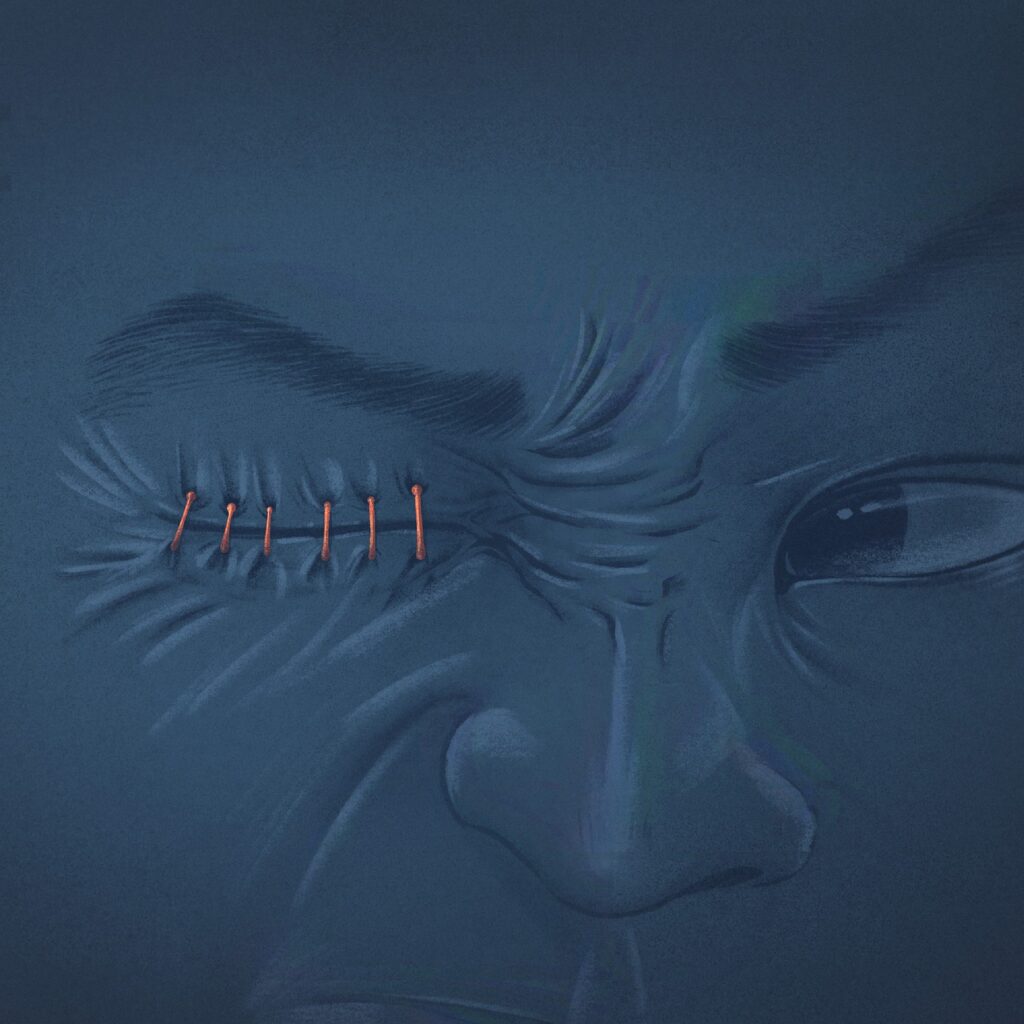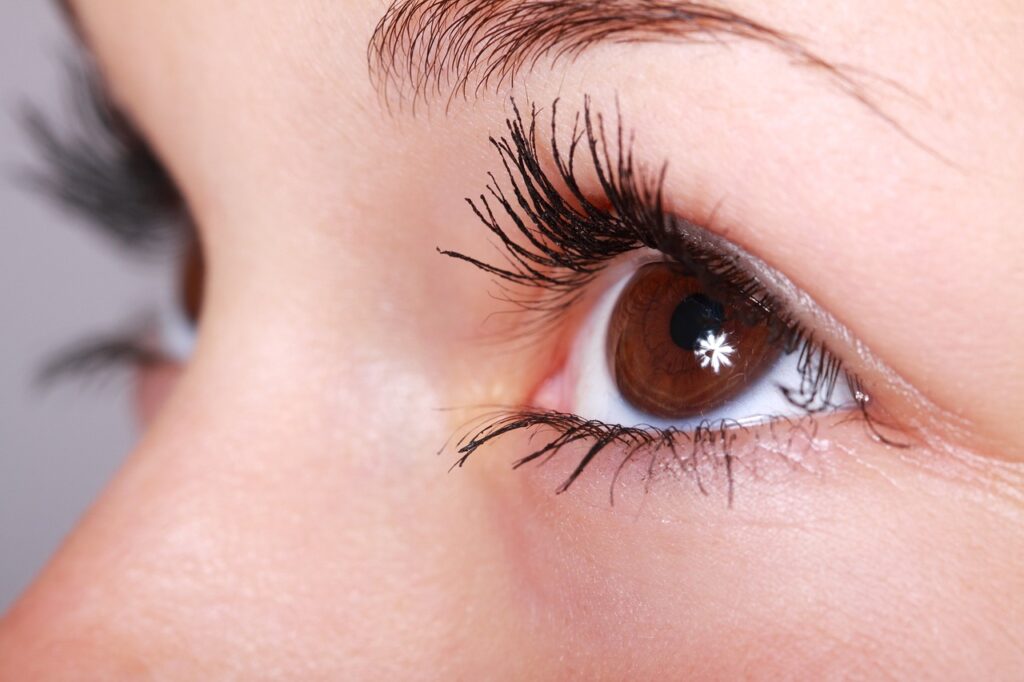Ciliary neuralgia, a lesser-known yet distressing condition, can significantly impact one’s quality of life. In this beginner’s guide, we will delve into the definition, pathology, causes, risk factors, stages, signs and symptoms, prevention, and investigation of ciliary neuralgia. Moreover, we will explore how homeopathy can provide relief and improve the overall well-being of those affected by this condition.

What Do We Mean By Ciliary Neuralgia?
Ciliary neuralgia, also known as ocular or eye neuralgia, is a painful condition characterized by severe, stabbing, or burning pain in and around the eye. This condition is often described as excruciating, and the pain can be sudden and intense. It occurs due to the irritation or inflammation of the ciliary nerves located near the eye.
The Pathology of Ciliary Neuralgia
Understanding the pathology of ciliary neuralgia is crucial to comprehending why this condition can be so agonizing. The ciliary nerves are responsible for transmitting sensory information from the eye to the brain. When these nerves become irritated or inflamed, they can send false pain signals, leading to intense discomfort.
Various Causes Of Ciliary Neuralgia
While the exact cause of ciliary neuralgia can vary from person to person, it is often associated with several factors, including:
1. Eye Infections: Infections such as conjunctivitis or keratitis can lead to ciliary neuralgia when left untreated.
2. Eye Trauma: Any injury or trauma to the eye can potentially damage the ciliary nerves, triggering neuralgia.
3. Underlying Conditions: Conditions like glaucoma, uveitis, or sinusitis can lead to ciliary neuralgia as a secondary symptom.
4. Nerve Compression: Sometimes, nearby structures, such as blood vessels or tumors, can compress the ciliary nerves, causing pain.
5. Postoperative Complications: Individuals who have undergone eye surgery may experience ciliary neuralgia as a complication.
The Risk Factors Of Ciliary Neuralgia
While ciliary neuralgia can affect anyone, certain risk factors may increase the likelihood of developing this condition. These risk factors include:
1. Age: Ciliary neuralgia is more common in older individuals, especially those over the age of 40.
2. Eye Health: People with pre-existing eye conditions or a history of eye problems may be at a higher risk.
3. Injuries: Individuals who engage in activities that carry a risk of eye injuries, such as sports or construction work, may be more susceptible.
4. Surgery: Those who have had eye surgery are at a heightened risk of developing ciliary neuralgia.
The Stages of Ciliary Neuralgia
Ciliary neuralgia typically progresses through several stages, each marked by distinct characteristics. Recognizing these stages can aid in early diagnosis and treatment. The stages of ciliary neuralgia include:
1. Prodromal Stage: In this initial stage, individuals may experience mild discomfort, occasional twinges of pain, or a feeling of pressure around the eye.
2. Acute Stage: The acute stage is characterized by severe and sudden eye pain. It often feels like a stabbing or burning sensation and can last for varying durations.
3. Chronic Stage: If left untreated, ciliary neuralgia can become chronic, leading to recurrent and persistent eye pain. This stage can significantly affect one’s daily life.
The Signs and Symptoms of Ciliary Neuralgia
Identifying the signs and symptoms of ciliary neuralgia is crucial for early intervention. Common symptoms include:
1. Severe Eye Pain: The hallmark symptom is intense pain around or behind the eye, often described as stabbing, burning, or shooting.
2. Eye Redness: The affected eye may appear red and inflamed.
3. Tearing: Excessive tearing of the eye can occur due to the irritation of the ciliary nerves.
4. Photophobia: Individuals with ciliary neuralgia often become sensitive to light, making bright environments uncomfortable.
5. Blurred Vision: Vision may become blurry or distorted during episodes of pain.
How To Prevent Ciliary Neuralgia?
Preventing ciliary neuralgia primarily involves taking measures to protect your eye health. Here are some essential tips for prevention:
1. Regular Eye Exams: Schedule routine eye check-ups to detect and address any underlying conditions early.
2. Eye Protection: When engaging in activities that pose a risk of eye injury, wear protective gear such as safety glasses or goggles.
3. Hygiene: Maintain good eye hygiene to reduce the risk of eye infections.
4. Manage Underlying Conditions: If you have pre-existing eye conditions, work closely with your healthcare provider to manage them effectively.
Investigation Of Ciliary Neuralgia
Diagnosing ciliary neuralgia can be challenging, as its symptoms may overlap with other eye conditions. To accurately diagnose the condition and determine its cause, various investigative techniques may be employed:
1. Comprehensive Eye Examination: A thorough eye examination by an ophthalmologist is essential to assess eye health, vision, and any signs of inflammation or nerve irritation.
2. Imaging Studies: CT scans or MRI scans may be conducted to rule out structural abnormalities or nerve compression.
3. Laboratory Tests: Blood tests may be recommended to identify underlying infections or inflammatory markers.
4. Nerve Blocks: In some cases, a diagnostic nerve block may be performed to determine if blocking the ciliary nerves temporarily alleviates the pain.
Homeopathy And Ciliary Neuralgia
Now that we’ve explored the various aspects of ciliary neuralgia, let’s delve into how homeopathy can offer relief and improve the quality of life for those affected.
Homeopathy As A Holistic Approach
Homeopathy is a holistic form of medicine that considers the individual as a whole, taking into account not only the physical symptoms but also the mental and emotional state. It aims to stimulate the body’s innate healing abilities to restore balance and alleviate symptoms.
Homeopathic Remedies For Ciliary Neuralgia
Homeopathic remedies are chosen based on the specific symptoms and characteristics of the individual. Some commonly used homeopathic remedies for ciliary neuralgia include:
1. Spigelia: This remedy is often indicated for sharp, stabbing pains in and around the eye. Used for severe, throbbing pain around the eye, especially the left one. Aggravated by touch, motion, noise, and better when lying on the right side with the head elevated.
Taken as 3-5 pills, 3 times a day (6C – 30C).
2. Belladonna: When there is intense eye pain, redness, and sensitivity to light, Belladonna may be considered. It is particularly useful for sudden and violent eye pain. Suitable for throbbing headaches in the forehead, temples, and occiput. Aggravated by light, noise, lying down, and improved by semi-erect posture.
Administered as 3-5 pills, 3 times a day (30C – 1M).
3. Arsenicum Album: If the pain is accompanied by restlessness and anxiety, Arsenicum Album may be recommended. It is also suitable for individuals who experience burning pain and a desire for warmth.
4. Gelsemium: When eye pain is accompanied by heavy eyelids and a sense of drowsiness, Gelsemium may be indicated. It is often chosen for individuals who experience a dull ache in the eye.
5. Aconitum: This remedy is suitable for eye pain that arises suddenly after exposure to cold or wind. It is often prescribed for individuals who feel fearful or anxious.
6. Sanguinaria: Effective for right-sided pain that starts in the back of the head and moves upwards, settling over the eyes. Better when lying down, worse with sweets and motion.
Recommended dosage is 10 drops in water, 3 times a day (tincture).
7. Cedron: Prescribed for pain across the forehead from temple to temple, mainly around 9 am. May cause a feeling of craziness.
Taken as 10 drops in water, 3 times a day (tincture – 3C).
8. Ignatia Amara: Recommended for headaches following anger or grief, often feeling like a nail driven through the side. Better when inclining the head forward, worse with tobacco exposure.
Taken as 3-5 pills, 3 times a day (6C – 200C).
Consultation with a Homeopath
It’s crucial to consult with a qualified homeopath for an individualized assessment and remedy selection. Homeopathy is a highly personalized form of treatment, and the choice of remedy depends on a thorough understanding of the patient’s symptoms and constitution.
Complementary Therapies
In addition to homeopathy, individuals with ciliary neuralgia may benefit from complementary therapies such as acupuncture, relaxation techniques, and dietary modifications. These approaches can enhance overall well-being and reduce stress, which may contribute to symptom relief.

To Sum Up
Ciliary neuralgia can be a challenging condition to live with, but with the right approach to treatment, individuals can find relief and regain their quality of life. Homeopathy, with its holistic and individualized approach, offers a promising avenue for managing ciliary neuralgia symptoms.
If you or someone you know is suffering from ciliary neuralgia, consider consulting with a qualified homeopath to explore personalized treatment options. By addressing the root causes of the condition and alleviating symptoms, homeopathy can play a valuable role in improving the overall well-being of those affected by this condition. Remember that early diagnosis and intervention are essential for the best possible outcomes, so don’t hesitate to seek medical advice if you suspect you have ciliary neuralgia.
Reach out to us for a Consultation.
This blog is for information purposes. It’s crucial to note that while homeopathy is a centuries-old practice with many adherents worldwide, always consult a qualified homeopath or medical professional before initiating any treatment.
For any queries, reach out to us at contact@homeopathic.ai





